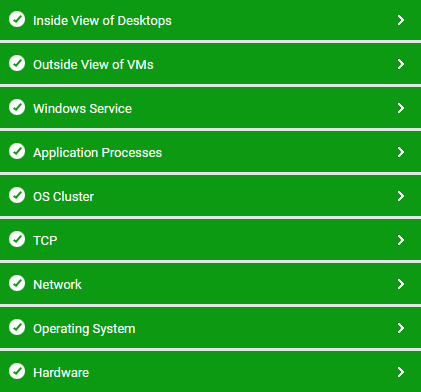The Hyper-V VDI Monitoring Model
In some environments, the virtual guests hosted on Hyper-V servers may be used to support desktop applications. Administrators of such virtual environments would want to know the following:
-
How many desktops are powered on simultaneously on the Hyper-V Server?
-
Which users are logged on and when did each user login?
-
How much CPU, memory, disk and network resources is each desktop taking?
-
What is the typical duration of a user session?
-
Who has the peak usage times?
-
What applications are running on each desktop?
-
Which Hyper-V server is a virtual guest running on?
-
When was a guest moved from a Hyper-V Server? Which server was the guest moved to?
-
Why was the guest migrated? What activities on the Hyper-V host caused the migration?
Using the Hyper-V VDI model (see Figure 1), administrators can find quick and accurate answers to all the queries above, and also receive a complete 'desktop view', which allows them to get up, close with the performance of every guest OS hosted by the Hyper-V server and detect anomalies (if any) in its functioning.

Figure 1 : The layer model of a Hyper-V VDI server
The layers depicted by Figure 1 and the tests associated with the layers are discussed in detail in the sections that follow. Since the last 4 layers of the model have already been dealt with in the previous section, this section will discuss the Hyper-V VMs and the Inside View of Desktops layer only.



